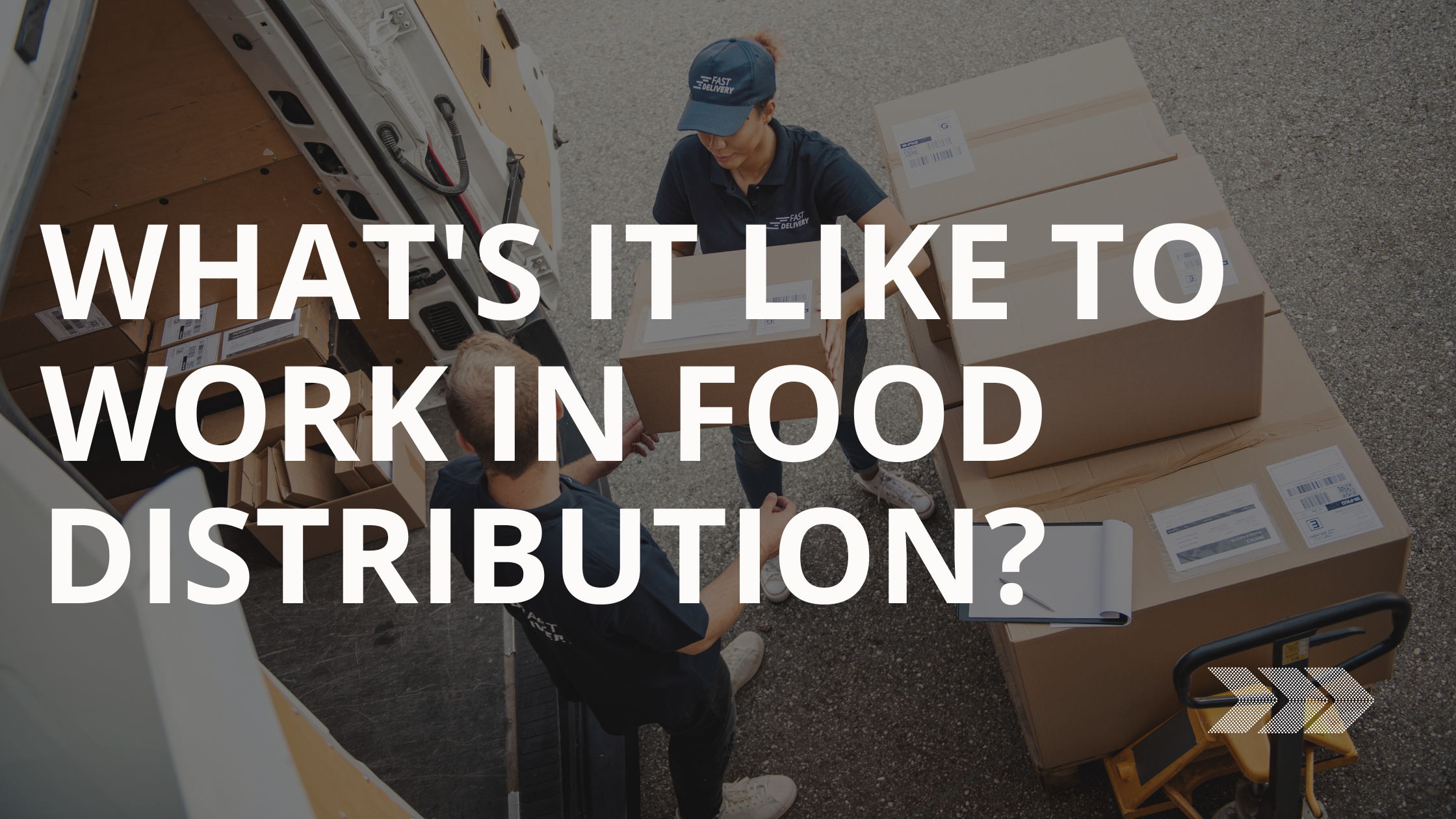What's it Like to Work in Food Distribution?

The global food market is arguably the most important industry in the world. We know we might be biased but divided into segments such as dairy products and eggs, meat, fish and seafood, and fruits and vegetables, we’re talking about some of the most integral products in our lives!
In the US in 2022, revenue in the food market amounts to $8.66 trillion and is expected to grow annually by 6.72%. To put this into context, this equates to a per-person revenue of $1,138 this year. In other words, the food market in the US and globally is huge!
And food distribution services are an integral part of the process of getting food from the farm to our tables. Food distribution is the key step that allows us to enjoy coffee beans from Colombia or bananas from the Caribbean, and really any food that isn’t grown in our own backyards.
If you’re considering working in food distribution, here’s a handy primer to help you get your head around some of the main aspects of the industry.
 What is food distribution?
What is food distribution?
Food distribution is the process by which food is collected from producers, stored, and then distributed to manufacturers, grocery stores, restaurants, and more. There are different types of distributors and different models by which food is moved between producers and food services.
Food distribution plays a vital part in the food market and supply chain as a whole, as it allows food products to be collected and sold in bulk. It would be impossible for a grocery source to source and order products from individual sellers, and likewise, many farmers do not produce enough food to fill large orders from big corporations.
Working in food distribution is an essential role that keeps the economy going, keeps supermarkets and restaurants well-stocked, and keeps people fed. And the market is constantly evolving.

Previously, long-distance food distribution across countries and continents was popular as demand rose for off-season produce and more exotic products. However, alongside growing concerns about the climate and increased pressure for more sustainable ways of living, local food distribution is rapidly becoming the preferred option.
If you take a career working with a specialty food distributor such as Buffalo Market (we focus on Direct Store Delivery and planet-friendly products) you can be on the front line of changing consumer behaviors and promoting a more sustainable way of shopping.
Working in food distribution is not just a good career option in the States but also has significance as an employment opportunity in developing nations. In fact, the food market currently employs the majority of people in developing countries, with opportunities extending beyond agricultural production to include storage, distribution, and retailing.
Companies are encouraged to promote more inclusive recruitment to boost local economies and support the ever-increasing demand for solid food systems and distribution globally.
What kind of jobs are available in food distribution?
For someone interested in working in food distribution, it’s important to think about what kind of job you would want to take and what kind of company you would like to work for. From packing to food technologists, mechanics, and quality control technicians, there are options for every skill set.
Other examples of jobs in the food distribution industry include:
- Systems analyst - responsible for designing technological solutions to keep production lines and distribution processes working efficiently
- Sales representatives - responsible for marketing and selling distribution solutions to retailers and food service operators
- Truck driving - responsible for transporting final products and goods to wholesale warehouses and retailers. Also occasionally responsible for transporting raw materials to manufacturers.
- Merchandising - responsible for managing inventory and ensure that consumer packaged goods (CPGs) are stocked and displayed correctly on retailer shelves.
Who are the key players in food distribution?
There are also different types of food distribution companies that operate under different models:
Broadline distributor
This is the most common kind of distributor. They handle large volumes of various types of products. For this reason, this type of distribution is used mostly by grocery stores and large retailers.
Due to the large number of products they distribute, they are generally able to offer good discounts and benefits to large volume buyers. Often, smaller operators will join together to buy a large enough volume of products to qualify for these bulk discounts.

Specialty distributor
Specialty distributors specialize in specific products or product categories.
For example, Buffalo Market specializes in organic, plant-based, and eco-conscious products. Often these kinds of distributors work with more niche operators, such as halal and kosher grocery stores and caterers, to help prevent cross-contamination.
This is a smaller market than broad-line distributors operate in but still very much a vital part of the global food market.
Redistributor
Redistributors don’t sell directly to restaurants or food service operators but purchase products from manufacturers.
Then they consolidate the goods in distribution centers and redistribute the products in more manageable quantities, generally around a truckload at a time, to other distributors.
Cash and carry
Cash and carry distributors don’t deliver and distribute their products to operators. Instead, they stock large numbers of various products in warehouses where operators such as restaurant managers or the owners of small grocery stores can visit to choose and purchase products. This type of distribution is most commonly used by restaurants and caterers.
What does the future hold for food distribution?
Some of the biggest challenges in the food distribution industry over recent years have been labor shortages across all stages of the supply chain, as well as high turnover rates for truck drivers. Some of these concerns and issues will be alleviated through a heightened use of technology to predict trends and allow distributors to be more proactive with changing supply chains.
 There is also increasing demand for food distributors. It’s predicted that agricultural production may need to increase by up to 70% globally and by 100% in developing countries to keep up with growing populations. The future of food production and distribution includes considering the infrastructure necessary to meet such a high demand for agricultural products.
There is also increasing demand for food distributors. It’s predicted that agricultural production may need to increase by up to 70% globally and by 100% in developing countries to keep up with growing populations. The future of food production and distribution includes considering the infrastructure necessary to meet such a high demand for agricultural products.
We can expect to see a continued commitment to end-to-end technology, which improves transparency across supply chains. This involves collaboration and data sharing between companies and will support fairer and more equitable production all around.
It’s also predicted that the government will take an increased interest in improving supply chains. The U.S. Department of Agriculture recently announced a $4 billion investment in the food supply chain, aiming to support food production, processing, and distribution.
Finally, the push towards more climate-friendly modes of producing and distributing food will continue as consumers demand increased sustainability across industries. Food distribution services will likely see more demand at a local level between producers and retailers, and models such as direct store delivery might become more popular.
Ready to start your career in food distribution?
Working in food distribution services is a great opportunity, no matter your skill set or specialization. Currently, there is a high demand for workers, especially in entry-level positions, due to long-term labor shortages, and as the industry continues to innovate, new jobs and services will be on the rise.
To learn more about the food distribution industry and the challenges and opportunities in the sector, head over to the Buffalo Market blog to learn more, or speak to a member of our team today!



